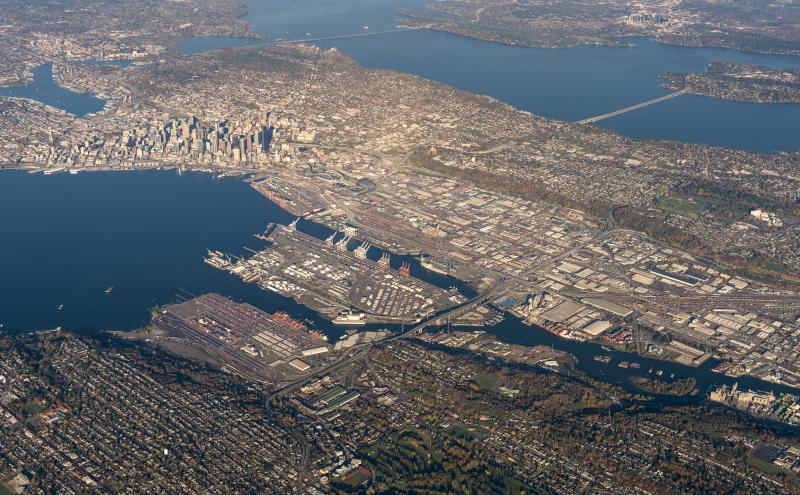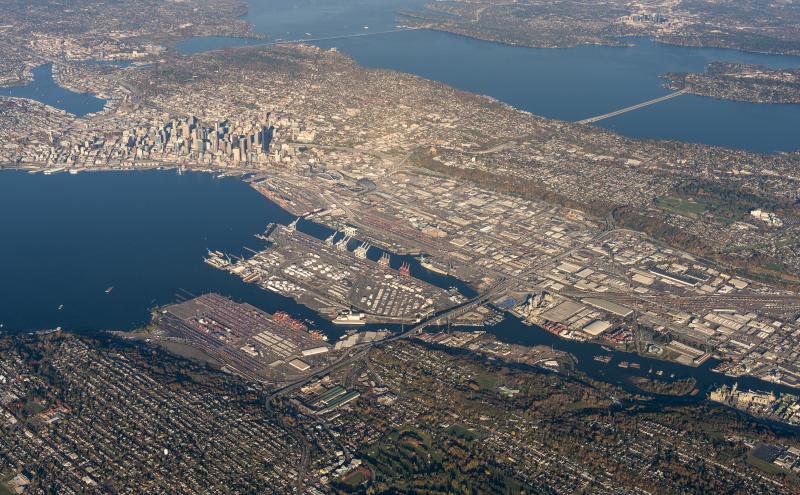
Around the turn of the last century, as societies and cities grew, we faced a daunting threat, which risked spreading disease, displacing people from their homes, and making wide swathes of land uninhabitable.
I’m speaking, of course, about sewage.
It’s hard for those of us who have never known life without modern sewage treatment systems to fathom the dramatic change in perspective it required to change everyone’s most intimate of daily habits and for communities to invest in municipal wastewater treatment. But without sewer systems, waterborne disease outbreaks of cholera and typhoid would have run rampant.
Today, climate change brings us a similar challenge. Runaway wildfires, ever more powerful hurricanes, and sea-level rise displaces communities and threaten to make wide swathes of land uninhabitable. Social inequities mean that the impacts of climate change disproportionately impact underserved communities, particularly those closest to essential transportation services.
The solution is investment in new technologies and infrastructure, and, once again, for all of us to make a change to our daily habits. We need to reconstruct our economy on a foundation of renewable energy, rather than fossil fuels, and we need to do it before mid-century.
Right here is where most of us throw up our hands. What can one person do in the face of a global crisis? Does it even matter if I ride my bike to work or fastidiously sort my recycling? I’ll be the first to admit that it can feel like emptying a pool with a teaspoon (while it’s raining). And I agree, there really is no point to us doing things individually, if we don’t also act collectively. Which is where our institutions need to step up. From local governments (like the Port) to federal and international bodies, we need action to end fossil fuel subsidies, to invest in clean energy infrastructure, and to accelerate the phasing out of old, dirty technologies.
In Washington State, we are already making progress. Our governor literally wrote the book on building a clean energy economy, and has helped to pass legislation that ensures our electrical grid will be 100% clean energy. This session we are working to pass a Clean Fuel Standard that will do the same for our transportation grid, and other efforts are underway to use taxes on dirty fuels to build out the infrastructure needed to kickstart renewable energy options in our state.
At the Port, we prioritized getting our own house in order first, cutting greenhouse gas emissions in half, ten years ahead of schedule. We are now focused on making it easier for our airline and maritime partners to transition off fossil fuels as well, by spearheading major efforts in sustainable aviation fuels and our Seattle Central Waterfront Electrification Plan.
We should think even bigger. What if the Port could help bring online one of the most sustainable, reliable forms of clean energy, allowing public utilities to shut down coal and natural gas plants up and down the West Coast? Last year I began investigating whether offshore wind (OSW) technology would be a viable clean energy option for the U.S. West Coast. For a variety of reasons (uniquely challenging topography, inexpensive hydroelectric power, smaller populations) there has not been as strong an economic case for West Coast OSW in comparison to Europe, Asia, or the U.S. East Coast. However, those calculations improve as the cost per kWh of OSW goes down.
At the same time, policymakers legislated an end to fossil fuel electricity production, creating new demand. Solar and inland wind will satisfy some of that demand, but OSW offers unique advantages. OSW is a much more consistent and reliable form of wind energy, uses larger turbines capable of producing two to four times the energy per tower as inland, and doesn’t turn off at night. In addition, OSW can also be used to produce hydrogen, not just electrons. Hydrogen is already proven to be a great replacement fuel for fossil combustibles. Imagine, for instance, a floating gas station out at sea where big containerships could fill up on hydrogen produced from seawater using power from floating wind turbines, thereby replacing bunker fuel — one of the dirtiest burning fossil fuels there is.
The Northwest Seaport Alliance, including the Port of Seattle, is uniquely suited to be a key link in the OSW supply chain for installations from the Bay Area to Hawaii to our own state waters. Our natural, deepwater harbors, our unobstructed access to the ocean, our diverse and high-skilled workforce, and our maritime economy of shipbuilders, naval architects, training facilities, and tug and towboat fleets put us in a great position to serve this nascent industry. At the same time, we are cognizant that OSW isn’t without its concerns. Continued research into impacts on fisheries and marine mammals is underway, and we need to build mitigation into projects.
So how do we go from a good idea to great jobs on our waterfront? The next step for me and my colleagues at the Port of Seattle is to bring together interested parties from industry, government, and labor to identify our shared priorities. We know that there are significant regulatory and financing challenges to overcome — but certainly nothing more difficult than what those early wastewater treatment planners faced. We can do big things, and there is no better time than now to get started.
If you’d like to learn more about our Offshore Wind efforts or if you’d like to be involved in our discussions moving forward, please subscribe to my email updates below. Or reach me directly at [email protected].




